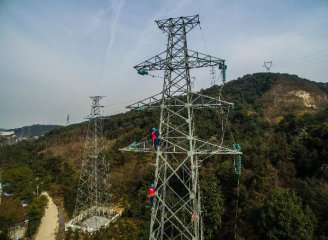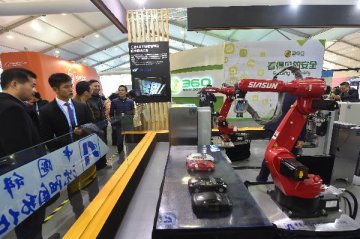
At the beginning of the year of the monkey, various policies and measures aiming at stabilizing growth and promoting investment are introduced. Industrial insiders believe that the recovery of investment growth rate is the main impetus for stabilizing growth, and more policies boosting investment growth are expected to be launched. This year, the monetary policy will remain prudent, fiscal policy will be strengthened, the spending of special construction fund and the scale of local government debt replacement and new loans will increase significantly, and public-private-partnership (PPP) projects will be put into pipeline at a faster speed. It is expected that the growth rate of infrastructure investment this year will maintain above 15 percent.
Policy measures stabilizing growth introduced frequently
The government frequently introduced policy measures to stabilize growth and promote investment. On Feb. 16, eight ministries, including the People’s Bank of China (PBOC), jointly issued the Certain Opinions of Stabilizing Growth, Adjusting Structure and Improving Efficiency for Industry by Finance, which proposed a series of policy measures supporting industrial transformation and upgrading and lowering costs and improving efficiency from six aspects, including strengthening monetary credit policy support and create a good monetary and financial environment. On Feb. 17, the Ministry of Finance published the Guidance on Injecting Fiscal fund into Government Investment Fund to support Industrial Development. The Guidance requires reasonable utilization of government investment funds, with key industries as priorities. For public finance that use government investment funds to support industries, it should be limited to key sectors and weak links with competiveness, market imperfection and obvious outside overflow.
Xu Kunlin, head of investment division of the National Development and Reform Commission (NDRC), indicated recently that in terms of taking measures from the both ends of supply-side structural reform and demand side, investment is actually the best joint point, thus China should boldly promote investment. The NDRC lately determined the points of strength to push forward “three strategies”, and deployed “six measures” to expand effective investment this year. It also arranged special construction funds of 400 billion yuan in the first quarter, and will continue to provide special construction funds on a quarterly basis, to play the pivot role of investment in stabilizing growth. According to the requirements of the NDRC, special construction funds should be used to support projects in major areas, based on the principle of “precise utilization, good return, not adding to excessive production capacity, not causing repeated construction and not producing crowding-out effect”. Previously, the Ministry of Housing and Urban-Rural Development (MOHURD) worked together with China Development Bank (CDB) and Agricultural Development Bank of China, to enhance policy financial institutions’ support to the construction of sponge city.
Infrastructure investment grows rapidly
For infrastructure investment, the NDRC announced 21fixed assets investment projects examined and approved in January 2016, and the total investment amounted to 54.1 billion yuan. A majority of such projects are water conservancy construction and energy projects. From the projects approved by the NDRC since last year, in addition to material infrastructure such as railway, highway, airport and water conservancy, ecological environmental protection and clean energy projects such as sponge city and underground comprehensive pipe gallery also become emphases.
NDRC spokesperson Zhao Chenxin said on Feb. 17 that as of the end of last year, an aggregate 5,056.4 billion yuan had been invested in main project packages in 11 major categories. 48 special projects and 326 projects have commenced construction.
From government reports issued by each province, autonomous region and city, local governments are actively promoting infrastructure investment. Hebei Province, Fujian Province, Ningxia Hui Autonomous Region and Xinjiang Uygur Autonomous Region all proposed to accelerate completing specific goals and targets of major projects. Beijing, Qinghai Province and Yunnan Province mapped out the plan of constructing sponge city and underground comprehensive pipeline gallery. Some provinces launched special measures to stabilize growth. Yunnan province recently issued the Opinions on Certain Policy Measures Ensuring a Good Beginning for Stabilizing Growth, which put forward 22 policy measures to promote the construction of major projects, effectively expand social investment, increase investment in urban infrastructure and encourage enterprises to expand sales and promote production. Anhui Province published the Opinions on Promoting Sustainable, Healthy and Rapid Economic Development, which sets out 30 measures aiming at stabilizing growth.
China International Capital Corporation limited (CICC) expects that infrastructure investment for the year will not decline. By simply annualizing the amount of special construction funds in the first quarter, the total for the year could reach 1.6 trillion yuan. Seen from over expected bank credit supply in January and recent policy direction, fiscal policy will be further eased this year, the availability of special construction fund, local government debt replacement and new loans will increase drastically, and the launch of PPP projects will accelerate. It is expected that more infrastructure orders will be placed this year than the last year, and the growth rate of infrastructure is expected to maintain above 15 percent.
Convoy of proactive fiscal policy
The January financial data released by the PBOC shows that new yuan loans hit a record high of 2.51 trillion yuan in that month. Lian Ping, chief economist with the Bank of Communications, indicated that policies stabilizing growth boosted credit demand, coupled with that it is the first year of the 13th “Five-Year” plan, the progress and implementation of various projects will further drive financing demand, especially medium and long-term credit demand.
Li Huiyong, chief macroeconomic analyst with Shenwan Hongyuan Securities, believes that proactive monetary policy will play a greater role in supporting growth in a conversion period, stabilize the market expectation, lower actual overall tax burden, effectively activate fiscal fund stock, accelerate issuance of the Treasury bond and policy bank bonds, enhance government investment, to create a bigger room for resource allocation and leverage.
Li is in the view that proactive fiscal policy could be reflected in various aspects: further reduce tax, and cut tax for manufacturing industries with heavy tax burden; continue to increase fiscal expenditure, in addition to sectors related to people’s livelihood such as healthcare, education and social security, the increased expenditure should also cover new infrastructure construction, energy saving and emission reduction, intelligent manufacturing sectors such as underground pipe gallery and sponge city; fiscal deficit is expected to be further increased, and the ratio can be raised to around 3 percent; policy financial institutions such as the CDB should play a greater role in supporting industries and enterprises that need assistance from the government; a basket of measures are to be taken to practically lower the costs of enterprises.
Translated by Adam Zhang
























Latest comments